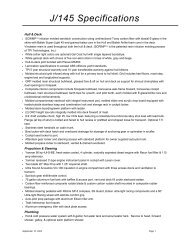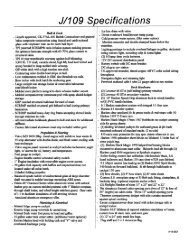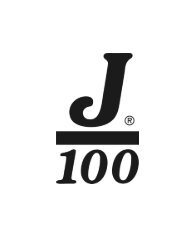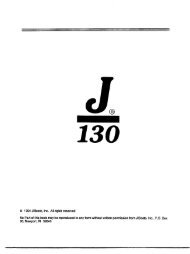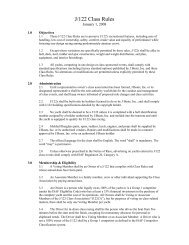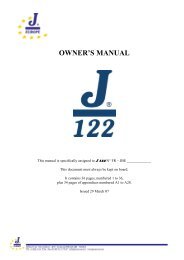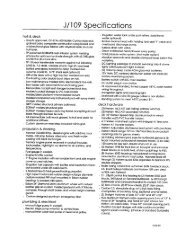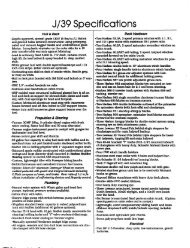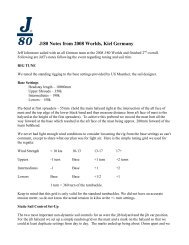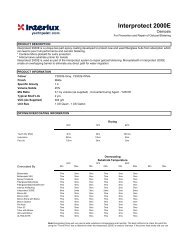J105 Owner Manual 2012.pdf - J/Owners
J105 Owner Manual 2012.pdf - J/Owners
J105 Owner Manual 2012.pdf - J/Owners
Create successful ePaper yourself
Turn your PDF publications into a flip-book with our unique Google optimized e-Paper software.
J/105 <strong>Owner</strong> Guide ...................................................................................................................................................................................................................................................... 15 <br />
Important Commissioning Follow-‐up <br />
The initial sea trial period, or the first 30 days after launching a new boat always requires <br />
important follow-‐up by the owner including sail fit checks, rig tuning and adjustments, <br />
instrument and compass calibration, maintenance and systems checks, etc... Your dealer and <br />
their support staff and other local suppliers will help you with this process. It is imperative that <br />
the following areas of the boat are inspected and confirmed to be operating properly after the <br />
initial 30 days. <br />
30 Day Inspection List <br />
PROPELLER SHAFT ZINC -‐ Inspection of the shaft zinc is very important in the first 30 days <br />
following launch. Accelerated zinc corrosion may indicate an electrical wiring problem onboard <br />
or stray current from a nearby boat. RAPID CORROSION OF THE SHAFT ZINC SHOULD NEVER <br />
BE IGNORED. IMMEDIATE ATTENTION IS REQUIRED BY THE OWNER & DEALER. Failure to <br />
respond to this important sign of galvanic corrosion may lead to severe damage to underwater <br />
metals. <br />
STEERING CABLES ON WHEEL-‐SUPPLIED BOATS – Steering cables are known to stretch after <br />
initial setting and usage. The following technique is helpful for adjusting cable tension in the <br />
system. A top quality roller chain to wire steering system can be kept in “as new” sensitivity by <br />
keeping the wire at a correct tension. To check for proper wire tension, lock the wheel in position <br />
by using the pedestal brake, or by tying off the wheel. Cable tension is best when you cannot <br />
move the quadrant or drive wheel by hand with the wheel locked in place. Over tightening will <br />
greatly reduce the sensitivity of the system. When leaving your boat at her mooring or slip, make <br />
sure that your wheel is properly tied off. DO NOT LEAVE THE STEERING SYSTEM TO FREE <br />
WHEEL. <br />
MAST, SPARS, RIG & RIGGING – The standing rigging terminations will seat and the SS rod will <br />
stretch during initial sea trials. It is prudent to inspect all fittings, terminations, turnbuckles, <br />
halyards, and mast wedges, and to look for any signs of unusual wear after sea trials. Checking <br />
and adjusting rig tuning is also recommended. <br />
The following ship systems must also be tested for proper operation: <br />
• ENGINE, THROTTLE CONTROL & FUEL SYSTEM. <br />
• FRESH WATER SYSTEM. <br />
• HEAD SYSTEM. <br />
• MANUAL AND ELECTRIC BILGE PUMP SYSTEMS. <br />
Finally: <br />
• REVIEW PROPER SAFETY EQUIPMENT – confirm all required safety gear is onboard and <br />
in working order. <br />
• CHECK ALL LIFELINE TERMINATIONS & TURNBUCKLES – Confirm cotter pins in <br />
turnbuckles and set screws are secure in all stanchion bases. <br />
• RE-‐VISIT & REVIEW COMMISSIONING CHECKLIST <br />
ANY PROBLEM AREAS IDENTIFIED ABOVE MUST BE ADDRESSED PROMPTLY.



